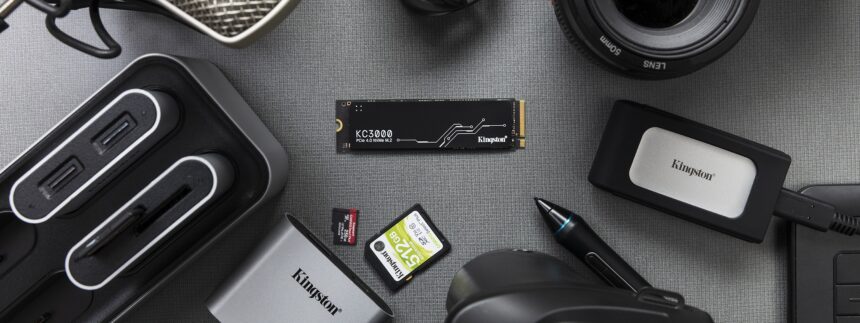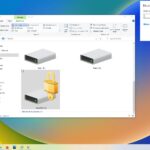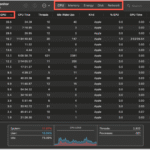In today’s tough school setting, dependable technology is no longer a luxury; it’s a need. Your computer’s Memory and Storage can have a big effect on how productive you are and how well you learn. For example, they can let you run multiple research applications at once or store huge libraries of digital resources.
That’s why students who want to improve their devices have liked my recent article, “Top Memory and Storage Upgrades for Students” ([Original Article Link – Placeholder]).
This post is an expanded version of that article. It has more in-depth analysis, useful tips, and a full set of links to help you learn more. We’ll talk about how important Memory and Storage are, go over the best Storage Upgrades for Students, list the best Top Memory and Top Storage options, and give you useful tips that you can use right away.
Why students need memory and storage
Your computer’s memory, or RAM (Random Access Memory), is like its short-term memory. It’s where your device stores the information it’s currently using, which makes it easy to access and switch between tasks. Not enough Memory can cause slowdowns that are very annoying, especially when you are running several programs at once, browsing the web with a lot of tabs open, or working with big files like videos or presentations.
On the other hand, storage is like your computer’s long-term filing cabinet. It’s where your operating system, programs, documents, pictures, videos, and other files are kept for good. As students gather more digital materials, such as lecture recordings, research papers, and creative projects, they need enough Storage. When you run out of Storage, you can’t save new files and your computer’s performance may suffer.
My article, “Top Memory and Storage Upgrades for Students” ([Original Article Link – Placeholder]), goes into more detail about the technical parts of RAM and different kinds of storage (HDDs and SSDs) to help you make smart decisions about upgrades.
Getting to Know Your Current Memory and Storage Situation
Before you think about any Storage Upgrades for Students or Top Memory additions, you should first think about what you need and what your current devices can do.
Checking Your RAM (Memory)
Windows: To open the Task Manager, press Ctrl + Shift + Esc. Click on the “Performance” tab and then “Memory.” This will show you how much RAM is installed and how much is currently being used.
macOS: Click the Apple menu in the top-left corner and choose “About This Mac.” The “Overview” tab will show you information about the RAM that is already installed. Click “System Report” and go to the “Memory” section for more information.
If you often see high memory usage (above 80–90%) while you work, upgrading your RAM is probably a good idea. My guide on how to find the best memory brands and specifications ([Link to Specific Memory Section in Original Article – Placeholder]) can help you pick the right modules for your computer.
Checking How Much Space You Have
Windows: Open File Explorer and go to “This PC.” You will see a picture of your storage drives and how much free space is on each one.
For macOS, open Finder and click “Go” in the menu bar. Then, choose “Computer.” You can also open a new Finder window; your hard drive(s) will be listed in the “Locations” section of the sidebar. To find out how much space is available and how much space is used on your main drive, right-click it and choose “Get Info.”
If you keep getting “disk full” warnings or have to delete files to make room, you should think about Storage Upgrades for Students. My article talks about different Top Storage options, both internal and external ([Link to Specific Storage Section in Original Article – Placeholder]).
The Best Memory Upgrade Options for Students
One of the best ways to speed up your laptop or desktop is to upgrade its Memory. This is especially true if you use multiple programs at once or run demanding ones.
Finding RAM That Works
Before you buy new RAM, you need to find out what kind and speed will work with your motherboard. The Memory Advisor tool on Crucial.com (https://www.crucial.com/store/advisor) is a great place to start. Just type in the make and model of your computer, and it will give you a list of Top Memory modules that will work with it.
Taking into account the speed and size of the RAM
The speed of RAM is measured in MHz. In general, higher speeds mean faster data transfer. Your motherboard’s chipset, on the other hand, will only support speeds up to a certain point. When choosing Top Memory, make sure it works with your system first, and then think about how fast it can be used.
Most students will find that 16GB is a big improvement over 8GB, which is the minimum amount of memory needed for basic tasks. If you often work with big data sets, edit videos, or run virtual machines, 32GB or more might be helpful.
Tips for Installing
Installing RAM is usually easy, especially on desktop computers. Sometimes, laptops are more complicated. There are many online tutorials that show you how to do things step by step, such as those on YouTube ([Link to a Reputable RAM Installation Tutorial – Placeholder]). Before you try to upgrade your hardware, make sure your computer is turned off and unplugged. Static electricity can hurt parts, so you might want to wear an anti-static wrist strap.
The best ways for students to upgrade their storage
If you run out of Storage, it can make it very hard to get things done. There are a number of Storage Upgrades for Students that you can think about, which is good.
Upgrades for Internal SSDs (Solid State Drives)
One of the best ways to speed up your computer is to replace its traditional hard disk drive (HDD) with an SSD. SSDs read and write data much faster, which means that boot times, application loading, and file transfers happen much faster. In my article, I compare different brands and models of Top Storage SSDs ([Link to SSD Comparison in Original Article – Placeholder]). Make sure that the internal SSD you choose works with the size and shape of your computer (2.5-inch or M.2 NVMe) and the type of connection it has (SATA or PCIe).
SSDs and External Hard Drives
External Storage solutions are a simple way to increase your storage space without having to open your computer. External hard drives (HDDs) are great for backing up and archiving big files because they have a lot of space for a low price. External SSDs are a good choice for files that you need to access often or as portable work drives because they transfer data much faster.
TechRadar’s Best External Hard Drives (https://www.techradar.com/news/best-external-hard-drives) and Best External SSDs (https://www.techradar.com/news/best-portable-ssds) are two examples of websites that give in-depth reviews of the best storage options.
Services for Storing in the Cloud
Cloud storage services like Google Drive (https://drive.google.com/), Dropbox (https://www.dropbox.com/), and Microsoft OneDrive (https://onedrive.live.com/) don’t upgrade your hardware, but they do give you a flexible way to store and access your files from anywhere with an internet connection.
Many of them have free tiers with limited storage, but paid plans give you a lot more space. Adding cloud storage to your workflow can help with local Storage Upgrades for Students.
Useful Advice for Students on How to Handle Memory and Storage
In addition to upgrading your hardware, you need to properly manage your computer’s Memory and Storage to keep it running at its best.
Closing Unneeded Apps and Browser Tabs
Having a lot of apps open at once or a lot of browser tabs open at once can quickly use up your Memory, which can slow things down. Close programs and tabs that you aren’t using right now on a regular basis. OneTab ([Link to OneTab Extension – Placeholder]) and other browser extensions can help you manage a lot of tabs at once.
Getting Rid of Unused Software
Your computer can build up a lot of software that you don’t use anymore over time. These programs can use up valuable storage space and may even run background processes that use up memory. Check the apps you have installed on a regular basis and remove the ones you don’t need.
Putting Your Files in Order
A file system that is well-organized makes it easier to find what you need and keeps your Storage from getting too full of things you don’t need. Make sure your folders are organized and that you use the same names for everything. You should regularly delete or archive files you no longer need.
Using External Storage for Backups and Big Files
If you often work with big video projects, high-res photos, or a lot of research data, you might want to use an external hard drive or SSD for Storage. This gives you more room on your main drive and keeps your important files safe. My article on the best backup strategies for students ([Link to Backup Strategies Article – Placeholder]) has more information.
Keeping an Eye on Your System’s Resources
Check your Task Manager (Windows) or Activity Monitor (macOS) often to see how much of your Memory and CPU are being used. This can help you find programs that use a lot of resources and figure out when it might be time for “Memory” or “Storage Upgrades for Students.”
How to Make Smart Choices About Upgrading
There are a number of things to think about when picking the best Memory and Storage Upgrades for Students, such as your budget, how comfortable you are with technology, and what you need.
Putting Your Needs First
Think about what you do most often on your computer. If you mostly use the internet and work with documents, a Memory upgrade might make the biggest difference. If you keep running out of room for big files, a Storage upgrade is probably the most important thing to do.
Looking into and weighing the pros and cons of different options
Before you buy, look into different brands and models of Top Memory and Top Storage. Check out reviews on well-known tech sites and compare prices and specs. You can find parts that work with your PC at good prices using tools like PC Part Picker (https://pcpartpicker.com/).
Thinking About Hiring a Professional to Do It
If you don’t feel comfortable installing hardware on your own, you might want to take your computer to a repair shop nearby to have it done professionally. This will cost more, but it makes sure the job is done right and keeps your device from getting damaged.
The Long-Term Benefits of Upgrading
Investing in Top Memory and Storage Upgrades for Students can have big benefits in the long run, such as:
Better Performance: Boot times, application loading, and overall responsiveness are all faster.
Better multitasking: the ability to run several programs at once without them slowing down.
More work done: You don’t have to wait as long for your computer to respond.
Longer Life for Your Device: Adding new parts to an old computer can give it a new lease on life.
Better Learning Experience: You can focus on your studies better when your computer works better and more reliably.
Keeping Ahead of the Game
Technology is always changing. Knowing about the newest changes in Memory and Storage can help you decide when to upgrade your devices and make sure they keep meeting your academic needs. To keep up with the latest products and trends, read tech blogs and websites that you can trust.
Conclusion: Giving You the Power to Succeed in School with the Best Memory and Storage
Optimizing the Memory and Storage on your computer is a proactive step you can take to make your academic journey more efficient and productive. You can greatly improve your learning experience by figuring out what you need right now, looking into the best memory and storage options, and using useful management tips. My article “Top Memory and Storage Upgrades for Students” ([Original Article Link – Placeholder]) gives you a good starting point. This longer blog post gives you even more information and resources to help you. If you spend money on your technology, you’ll be spending money on your success.
Outside Resources:
- Memory Advisor from Crucial.com: (https://www.crucial.com/store/advisor)
- TechRadar’s list of the best external hard drives: https://www.techradar.com/news/best-external-hard-drives
- TechRadar’s list of the best external SSDs: (https://www.techradar.com/news/best-portable-ssds)
- PC Part Picker: (https://pcpartpicker.com/)
- Google Drive: (https://drive.google.com/)
- Dropbox: https://www.dropbox.com/
Microsoft OneDrive: (https://onedrive.live.com/)
https://bigezwehotv.rw/category/trends







